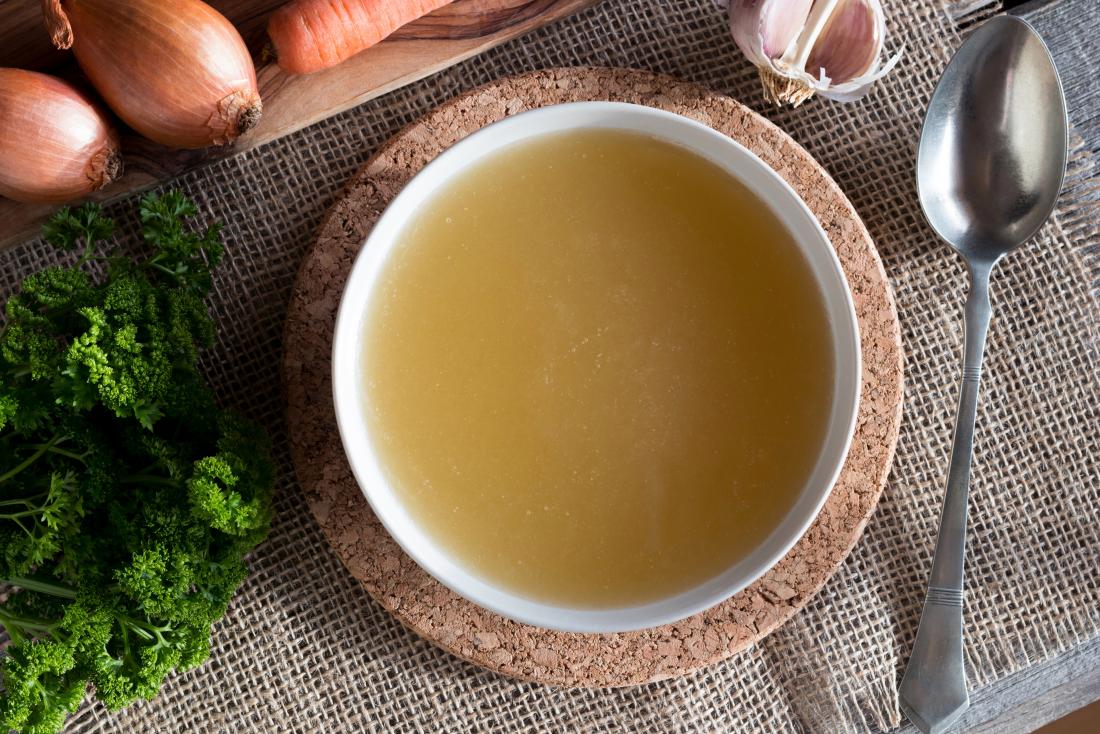Bone Broth: Trend or Tradition?

It’s long been conventional wisdom to sip bone broth when you’re sick, weak, or cold. But does it truly have helpful properties? Absolutely, said Dr. Sue Howell. According to Dr. Howell, both humans and pets can benefit from bone broth.
Bone broth makes a wonderful warm beverage to sip or base from which to build a nutritious soup or stew. Dr. Howell answered a few questions about the concoction.
Q. Why are we hearing more about bone broth these days?
A. For centuries, many cultures have valued the supportive properties of bone broth. It’s a traditional healing method. But bone broth has definitely become a trendy buzzword recently. People are becoming more aware of healing traditions and how natural approaches to health can have a positive impact. And pets don’t usually get to eat a lot of real food. We’ve removed them from their natural diets, so getting back to eating bones, ligaments, tendons, and marrow can be a good idea.
Q. What are the benefits of bone broth?
A. For both humans and animals, it can help support bone and joint health, stimulate appetite, soothe digestion, and support brain health and the immune system. For pets, bone broth can also be given as preventive care, to help with nausea, and for recovery support after injuries.
Q. What makes bone broth so nutritious?
A. It’s a great source of minerals, including calcium, phosphorus, and magnesium. Bone broth contains the amino acids proline and glycine, as well as gelatin, which support joint health.
Q. Can’t bone broth simply be purchased at the store?
A. You can now find organic chicken and turkey bone broth at health food stores, but as a general rule, from-scratch bone broth is not the same as the broth or stock you may find in cartons in the soup aisle at the grocery store. Bone broth is also not the same as powdered bouillon, which can be used to make a soup base. I would recommend avoiding powdered bouillons because many are full of salt, sugar, corn syrup, and monosodium glutamate (MSG), which can cause headaches and digestive problems for some people. Making bone broth at home is easy, inexpensive, and tastes much better than store-bought alternatives.
Q. How do I make bone broth?
A. It’s very simple. All you need is a crockpot and some basic ingredients. In addition to bones, important ingredients include: apple cider vinegar to help to pull minerals from the bones, peppercorn to increase absorption of nutrients, and turmeric or curcumin for anti-inflammatory and antioxidant effects.
Pepper and turmeric are a magic combination. In fact pepper helps digestive absorption of curcumin by as much as 2,000 percent!
Here’s a recipe I like to use that is based on one from Nourishing Broth, a book by Sally Fallon Morell and Dr. Kaayla T. Daniel.
Ingredients
3-4 pound free-range, organic chicken
Vegetable scraps, including but not limited to:
- 2-3 carrots, chopped
- 2-3 celery stalks, chopped
- 1 parsnip, chopped
- 1 onion, cut in quarters (Exclude if making broth for pets; see note below.)
- 1 whole garlic head, cut in half (Exclude if making broth for pets; see note below.)
1 or 2 bay leaves
⅓ cup apple cider vinegar
1 tablespoon peppercorns, in a tea bag or cheesecloth
½ tablespoon turmeric
1 bunch fresh parsley
Other herbs to taste (optional)
Sea salt to taste
Directions
To a crockpot, add all ingredients except parsley, other herbs, and salt. Cover with filtered or spring water.
Cook for 6-8 hours on low, then remove chicken meat from bones. Put the bones back into the broth. (You may break them first to release more of the marrow into the broth.)
Continue to cook on low for 20-24 hours, stirring occasionally. During the final hour of cooking, add the parsley (to pull additional minerals from the bones), any other herbs you prefer, and sea salt.
Using a strainer or cheesecloth, remove the bones and vegetables, cool, and pour into glass jars or containers for storage. Refrigerate for up to one week or store in the freezer.
Note: Onions and garlic are not safe for pet consumption, so do not include those ingredients in bone broth that will be given to pets. It’s important to strain the broth to remove all bone fragments. Also, do not give these bones to your pets! Cooked bones can splinter and cause problems. Use only raw marrow bones for pets.
